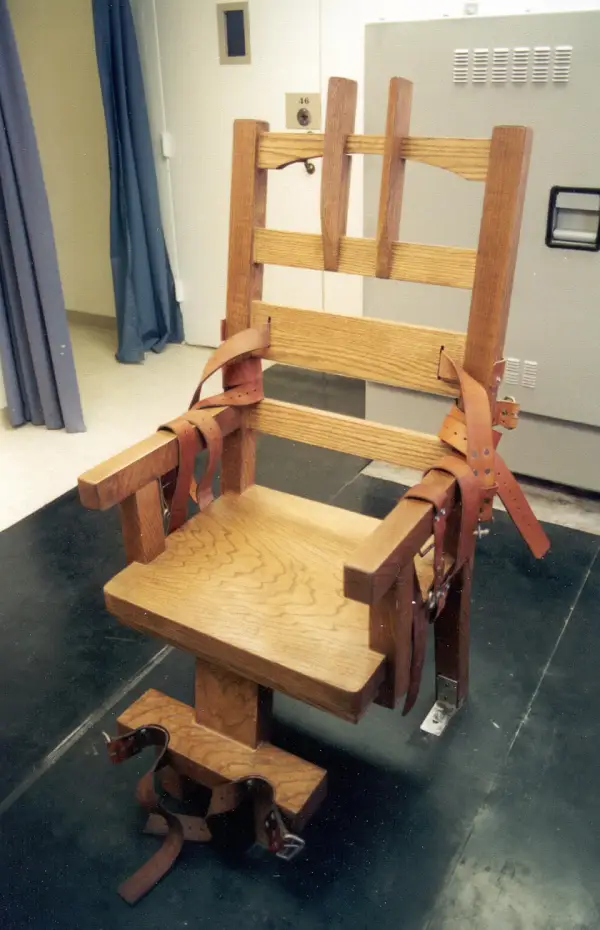One of the most famous tests ever conducted, the Stanford Prison Experiment, teaches a number of important lessons concerning incarceration and the overall treatment of criminal justice offenders. This experiment also reveals much about the criminal justice system that continues dealing with prisoners in a punitive rather than a rehabilitative manner, regardless of crime.
What is the Stanford Prison Experiment?
The Stanford Prison Test, formally known as “A Study of Prisoners and Guards in a Simulated Prison” was conducted by Philip Zimbardo, Craig Haney, and Curtis Banks at Stanford University. This study is one of the most cited tests despite being ended early for safety and ethical reasons. The hypothesis of the experiment seemed to be proven in light of these issues and as a result has become an academic point of reference when discussing prison violence and its causes. An analysis of the Stanford Prison Experiment reveals flaws, which should be considered along with the outcomes of this study.
Background and Purpose
The Stanford Prison Experiment was conceived by Philip Zimbardo who wanted to see the impact of the prison environment on inmates and guards. Within this framework, "No specific hypotheses were advanced other than the general one that assignment to the treatment of 'guard' or 'prisoner' would result in significantly different reactions on behavioral measures of interaction, emotional measures of mood state and pathology, attitudes toward self, as well as other indices of coping and adaptation to this novel situation." The specific intent of the research was to show whether prison roles would causes changes in psychology.
Study Design and Methodology
The research was designed as a simulated prison environment that used single treatment variable of role designation with participants being assigned “guard” or “prisoner”. The idea behind this design was to create an approximation of real prison conditions where each role was provided different directives. Guards were directed to maintain order without using physical violence or certain forms of psychological abuse such as racism or other overt forms of abuse. Prisoners were directed to mimic a real prison environment by having to do things such as asking to use the bathroom send mail. The roles were operationally defined as:
The “prisoner” subjects remained in the mock-prison 24 hours per day for the duration of the study. Three were arbitrarily assigned to each of the three cells; the others were on stand-by call at their homes. The “guard” subjects worked on three-man, eight-hour shifts; remaining in the prison environment only during their work shift and going about their usual lives at other times (Haney, Banks , & Zimbardo, 1973).
The study was designed to be observational in nature with researchers recording behavior using cameras (hidden and in plain sight) and journals. The research was a combination of qualitative and quantitative approaches that attempted to measure changes in behavior. The variables of the experiment were important to this study due to the need for randomization of the population. The independent variable was the random assignment of participants to the role of prison guards or prisoners. This random placement was defined as the ‘single treatment variable’ which identifies the singular roles and their conditions within the experiment. The dependent variable was the effect or measured impact of the interaction between independent variables. This created qualitative and quantitative results as behavioral changes could be both identified and recorded throughout the experiment.
Population and Sample
The population was intended to represent a prison environment or a general population of people. The sample size was 24 people with 22 participating subjects and was acquired from a newspaper ad asking for male volunteers who would be paid $15 per day. It was only possible to obtain 24 participants due to difficulties with the extensive questionnaire that has stringent requirements for, "family background, physical and mental health history, prior experience and attitudinal propensities with respect to sources of psychopathology (including their involvements in crime)." Of the 24 chosen, 22 participated in the study with the remaining two as alternative participants.
Results
The results of the study were taken from data collected after the experiment was terminated at the six-day mark. With the data collected from this period the findings were as follows:
*approximately 30% of the guards as ‘cruel and tough’; about 50% were ‘tough but fair’; *and less than 20% were ‘good guards’ (generally helpful and kind to the prisoners) (Haney, Banks , & Zimbardo, 1973). *Prisoners were depressed and were 90% focused on the prison conditions.
Researchers concluded "power" was the overarching factor causing behavioral changes.
Critical Issues
The experiment's findings are troublesome due to several factors. The most troublesome part of the study is the population. The population that the test was intended to mimic was not indicative of prisons since the experiment used college students and significant differences can be seen in prison populations and college populations. To make this test more realistic a different population would need to be used that more closely represented the demographics of prison inmates.
The experiment also lacked a control group. Without some form of control group there is no way to tell if the behaviors were being caused by some other issue such as the design of the experiment itself. The groups were also too small of a sample, which creates validity issues. A sample size of 22 people is too small to create statistical significance in a group the size of a prison. There were also numerous validity problems in the study such as the ratio of guards to prisoners, lack of violence, the simulated or artificial nature of the environment, and the knowledge that a person could leave when they so desired.
A final issue with the experiment was the numerous ethical issues that were attached to the experiment. Besides the treatment of participants there was the issue of cameras being hidden as well as the over involvement of researchers in the experiment itself. The ethical issues present problems rendering the experiment unreplicable. This is extremely problematic because the methods themselves may be the cause of the changes in behavior.
While the researchers proved their hypothesis, this was only accomplished with the context of the experiment. The study in many ways was not realistic and because it cannot be replicated due to ethical reasons, it remains unchallenged, drawing into question the research conclusions. The researchers conclude power as the cause of behavioral changes which is expressed in the study:
The use of power was self-aggrandizing and self-perpetuating. The guard power, derived initially from an arbitrary and randomly assigned label, was intensified whenever there was any perceived threat by the prisoners and this new level subsequently became the baseline from which further hostility and harassment would begin. The most hostile guards on each shift moved spontaneously into the leadership roles of giving orders and deciding on punishments. They became role models whose behavior was emulated by other members of the shift (Haney, Banks , & Zimbardo, 1973).
Although power is a likely candidate for the behavioral changes in the study, this presents a very limited view of psychology. The limitations of the experiment preclude other causes such as characteristics that are unique to prisons such as gangs, overt racism, and other factors which may cause violent behavior and depression. More importantly, the design of the study itself may have created the behavioral changes in the participants due to the types of directives given, setting, and other contextual factors. It is highly likely that other more complicated factors were at work in the experiment. However, it is unlikely that this study will be challenged outside of criticism and debate due to the inability to replicate. More robust studies of prison environments need to be constructed but this remains a challenge due to the nature of prisons and the inability to safely observe these environments.
What We Should Learn From the Stanford Prison Experiment
The Stanford Prison Experiment revealed something unsettling in prison settings; primarily the environments breed behavioral changes. Though many questions arise from this experiment, there can be no doubt that prisons foster violent and aggressive behavior in both inmates and custodians. One of the causes of this behavioral changes appears to be due to unchecked authority or power without oversight, which has even deeper implications.
Not only does authority motivate hostile and aggressive behavior but there appears to be an individual component since some guards acted differently: some crueler and tougher than others. This factor lends itself to the idea that individuals have an element of control in these situations but also that there is a loss of of autonomy as new guards modeled behavior on leaders. If nothing else, the experiment showed in this regard that authority requires proper training since none of the guards were actual guards.
Criticisms of this experiment point, with merit, to the simulated nature of the prison, but countering this argument is the fact that real prisons are far more violent and abusive than a simulated environment where no one is killed and people cannot just leave. With this in mind, the likelihood of prisons causing violent behavior and making people worse individuals, then prior to their incarceration, greatly increases.
What we should learn from the Stanford Prison Experiment is that prisons are designed completely wrong on the basis of warehousing as punishment, doing harm to both guards and prisoners.
For Students & Those Seeking a Deeper Understanding of the Experiment: A Study of Prisoners and Guards in a Simulated Prison
Independent Variable
The independent variable in the Stanford Prison Experiment (SPE) was the random assignment of participants to the role of prison guards or prisoners. This was referred to in the experiment as the ‘single treatment variable’ which relates to the different roles as conditions of the experiment.
Dependent Variable
The dependent variable is the effect or measured outcome of the SPE experiment. This variable was both the measure of individual and group behavioral changes.
Control Group
No control group present.
Experimental Group
The experimental group consisted of 24 subjects who were chosen based on stable psychological and physical attributes. This group was chosen based on having the least number of anti-social behaviors such as drug use and physical ailments. A group of 22 was chosen with 2 alternatives and the chosen group was randomly assigned roles of guard or prisoner.
Research Method
The research method was a simulated prison environment utilizing a single treatment variable of participants being assigned the role of “guard” or “prisoner” condition. The concept was to create close proximity to real imprisonment and as such the conditions were provided different directives such as guards having to maintain order but without using physical violence or certain forms of psychological abuse such as racism. Prisoners were given directives that were intended to mimic the real prison environment such as asking to go to the bathroom or writing a letter. The behavior of both groups was observed, recorded, and analyzed.
Data Collection Technique
The data collection method was observational in nature using video and audio recordings of the simulated prison environment. At the end of the experiment, the groups were debriefed and their experiences were recorded. One interesting aspect of the data collection was the fact that the video and audio were recorded using both covert and overt methods.
Sample (size, breakdown)
The study comprised 24 participants, predominantly college students from a middle-class background, with 22 actively involved. The majority were Caucasian, with one Oriental participant. They were selected from 75 individuals who responded to a newspaper ad seeking male volunteers for a psychological study on prison life. The selection process involved a rigorous questionnaire on family background, health history, and attitudes towards psychopathology, resulting in 24 qualified participants, from which 22 were chosen, with two as alternatives.
Population — are the findings generalizable to that population?
While clearly something is taking place at the psychological level of the individual participants it is unclear if these findings are generalizable to that population. There are other factors that would need to be considered such as the demographics of most real prisons.
Hypothesis
According to the researchers, “No specific hypotheses were advanced other than the general one that assignment to the treatment of “guard” or “prisoner” would result in significantly different reactions on behavioral measures of interaction, emotional measures of mood state and pathology, attitudes toward self, as well as other indices of coping and adaptation to this novel situation.” The researchers were attempting to show that prison roles would cause changes in psychology.
Did they prove their hypothesis? Explain.
Within the context of this experiment, the researchers did prove their hypothesis because behavior and psychology did incur change from being assigned prison roles. However, this success is based on the simulated prison environment, not an actual prison environment.
Findings
Researchers characterized the guards as: (See Results Above). Prisoners were depressed and were 90% focused on the prison conditions. Power was found to be the overarching factor causing behavioral changes.
Extraneous Variables
Important concepts to consider in this experiment would be a small sample size, sample size not matching the demographics of real prisoners, and a short time of the experiment (6 days).
Research Flaws
The major flaws in the experiment were the undersized sample, validity issues, and unethical behavior. The sample of 22 participants is not large enough to create statistical significance. There are also validity issues with the experiment such as demographics of the simulated environment, not matching a real-world prison. There are many validity issues in question such as the ratio of guards to prisoners and lack of violence that is indicative of a simulation, not a real world prison. As well, the experiment was fraught with ethical violations from the beginning such as exposing people to maltreatment and researchers becoming too involved in the scenarios.
What could have been done more efficiently?
This experiment could not have been done more efficiently due to ethical issues. The experiment needed to take place in a real prison in order to have been more efficient and effective. Observing a simulated environment created conditions that allowed for efficiency but reduced realism.
Could the study be replicated?
This study cannot be replicated due to it being considered unethical.
Does more research need to be done? Explain.
Despite the ethical implications of the experiment, more research needs to be done in this area because the experiment was successful in showing that when people are placed in either role of prisoner or guard in a prison environment their behavior and psychology are impacted. What is in question is the degree of this impact and how the differences in demographics of real prisons would impact these outcomes.
What directions should later research take in this area?
New research should be committed in this area but within the prison system with willing participants. Perhaps participants having video cameras in cells or by using interview methods.
Generalizability — Can the research be generalized to the entire population or a smaller group?
Because the SPE was cut short and was not designed well, one must be careful of making generalizations. It would be safe at this point to consider the fact that prison environments are forces for change both psychologically and behaviorally. However, specific behavioral generalizations cannot be made at this time because SPE was not a close enough approximation of a real prison environment.
What did you think of the study design? This study, despite being unethical and poorly designed, was a strong example for future prison studies. The changes that occurred in the college male demographic was surprising. Despite the fact that these participants were chosen for the lack of violent pathologies, they became dangerously close to physical violence. This warrants closer study.
What did you think of the findings? The research team credits authority or power with the primary causes of changes in behavior and psychology. In the terms of the researchers:
The use of power was self-aggrandizing and self-perpetuating. The guard power derived initially from an arbitrary and randomly assigned label, was intensified whenever there was any perceived threat by the prisoners and this new level subsequently became the baseline from which further hostility and harassment would begin. The most hostile guards on each shift moved spontaneously into the leadership roles of giving orders and deciding on punishments. They became role models whose behavior was emulated by other members of the shift.
While power appears to be the culprit, this appears to be an oversimplification of human behavior. For example, rather than power being the sole cause, limits of educational understanding of prisoners and how to manage them would also be a likely factor. If it were true that power alone was constantly self corrupting it, then one would expect that everyone in power would eventually become corrupt. This does not happen which tends to show that there are more complex variables at work such as psychological factors, like violent upbringing, poverty, lack of education, and many other elements that may impact one's perception of power and use.
What might you have done differently? A replication of the experiment would really necessitate a larger sample and more validity. This would not be possible in a simulated environment so instead, a long-term observation of a prison environment would be needed. A 5-year study that follows the incarceration of many different real prisoners from their entrance to the prison to the end of the study.
Haney, C., Banks , C., & Zimbardo, P. (1973, September). A Study of Prisoners and Guards in a Simulated Prison. Naval Research Reviews, 1–17.
Photo by Guido Coppa on Unsplash
 Question? Comment? Rebuttal?
Question? Comment? Rebuttal?Copy the article's title or link to send with your response.








